Adult neurogenesis and specific replacement of interneuron subtypes in the mouse main olfactory bulb
- PMID: 17996088
- PMCID: PMC2238759
- DOI: 10.1186/1471-2202-8-92
Adult neurogenesis and specific replacement of interneuron subtypes in the mouse main olfactory bulb
Abstract
Background: New neurons are generated in the adult brain from stem cells found in the subventricular zone (SVZ). These cells proliferate in the SVZ, generating neuroblasts which then migrate to the main olfactory bulb (MOB), ending their migration in the glomerular layer (GLL) and the granule cell layer (GCL) of the MOB. Neuronal populations in these layers undergo turnover throughout life, but whether all neuronal subtypes found in these areas are replaced and when neurons begin to express subtype-specific markers is not known.
Results: Here we use BrdU injections and immunohistochemistry against (calretinin, calbindin, N-copein, tyrosine hydroxylase and GABA) and show that adult-generated neurons express markers of all major subtypes of neurons in the GLL and GCL. Moreover, the fractions of new neurons that express subtype-specific markers at 40 and 75 days post BrdU injection are very similar to the fractions of all neurons expressing these markers. We also show that many neurons in the glomerular layer do not express NeuN, but are readily and specifically labeled by the fluorescent nissl stain Neurotrace.
Conclusion: The expression of neuronal subtype-specific markers by new neurons in the GLL and GCL changes rapidly during the period from 14-40 days after BrdU injection before reaching adult levels. This period may represent a critical window for cell fate specification similar to that observed for neuronal survival.
Figures
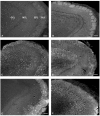


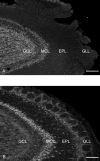
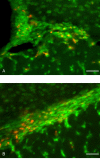
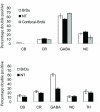
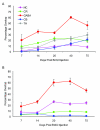
References
-
- Hack MA, Saghatelyan A, de Chevigny A, Pfeifer A, Ashery-Padan R, Lledo PM, Gotz M. Neuronal fate determinants of adult olfactory bulb neurogenesis. Nat Neurosci. 2005;8:865–872. - PubMed
Publication types
MeSH terms
Substances
Grants and funding
LinkOut - more resources
Full Text Sources

